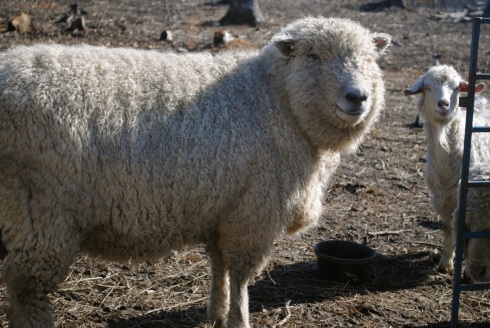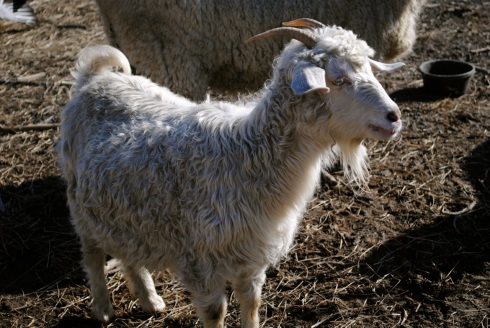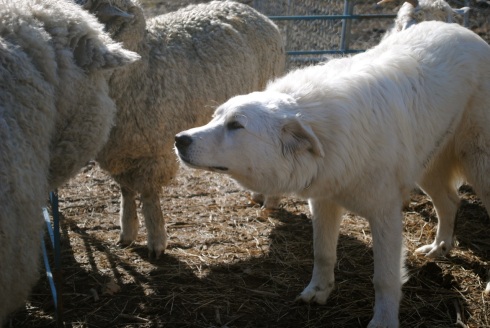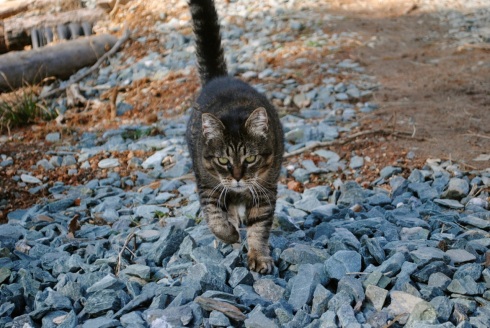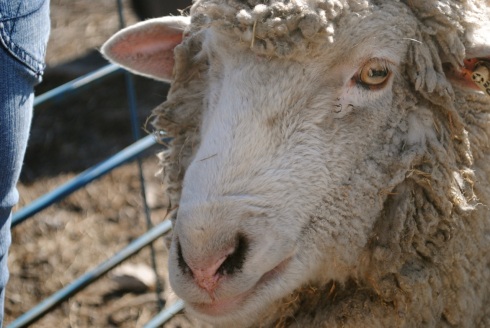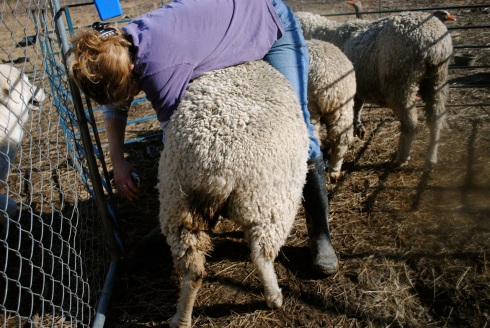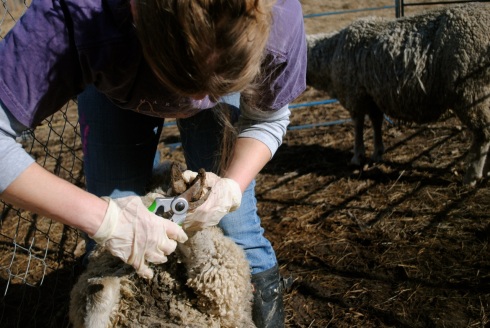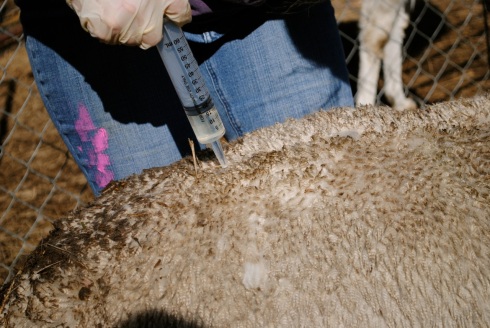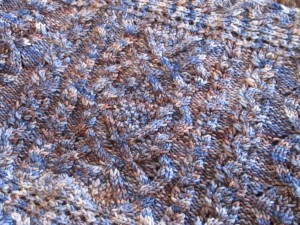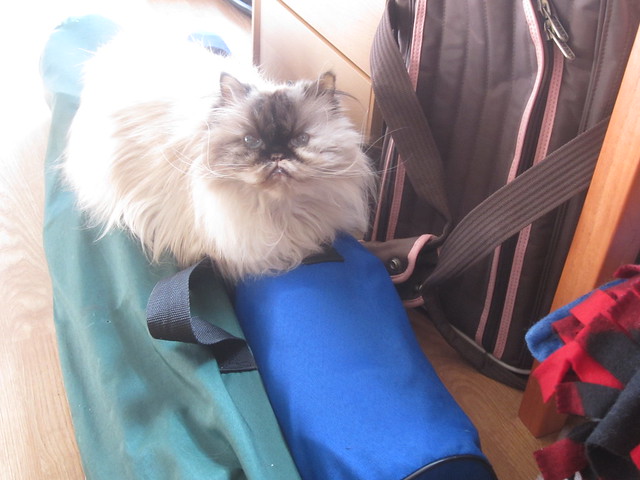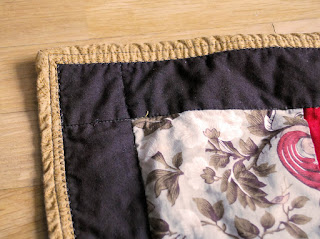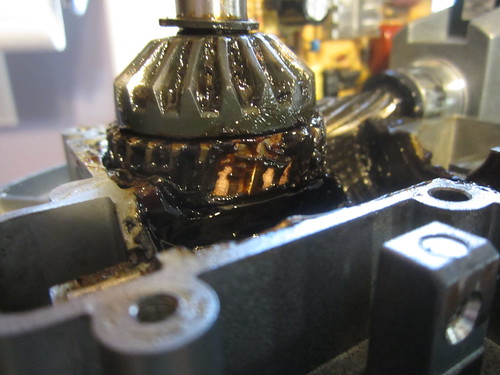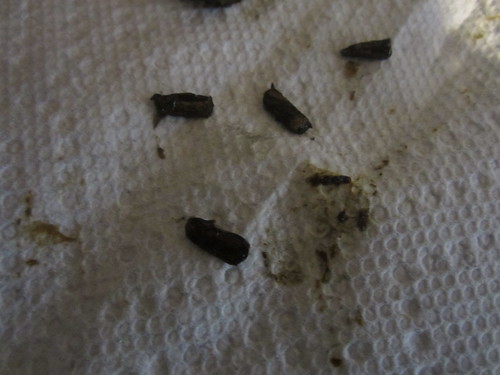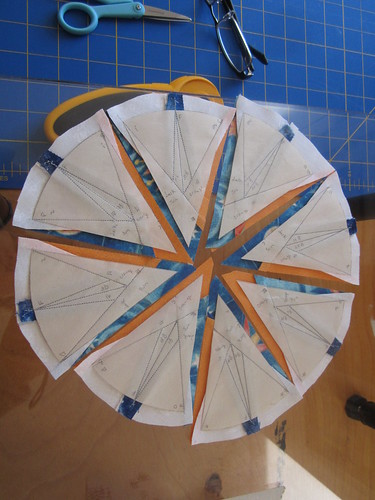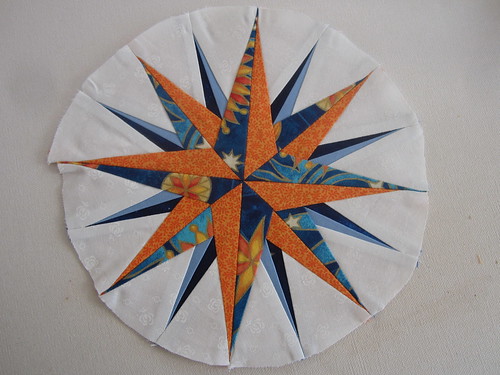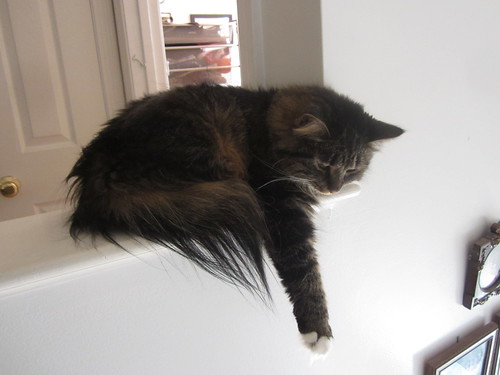It is 74 degrees right now. In January. Following a week of being in the 20′s. Crazy weather, y’all.
When I walked out the door this morning to bring hay down to the flock and felt how warm it was I decided that today was the day to check hooves and administer some delouser (a liquid pesticide to kill lice). Did you know that sheep can get lice? Just like people can get lice, livestock get their own brand.
No, they can’t be transmitted to humans.
Also, I am not positive my sheep even actually have lice, but one or two of them have been rubbing against a tree stump regularly, and Amelia’s actually pulling her wool a bit with the effort. They’ve been checked for all other manner of parasite and are quite healthy, so I have made a best guess that there may be some teeny, tiny, impossible to spot lice on them.
Since I am thoroughly paranoid and overprotective of the animals in my care (and terrified I will do something wrong / not do something I should do) I bought a big bottle of delouser, read the instructions, got a giant plunger to measure the amounts, and got to work.
I’ve done hooves and delousing over at Susan’s many a time and figured that 5 sheep and 2 goats wouldn’t be too bad.
I. Was. Wrong.
Neve came along to capture images for me, but quite honestly, those animals kicked my butt. I ended up having her help hold them for me, but she wasn’t strong enough. While I was struggling to get Piper’s hooves done, someone knocked over the bucket with the jar of delouser and it spilled everywhere. In the end, I trimmed Piper’s hooves and got everyone deloused. I was thoroughly winded and Alabama nearly did me in with his size.
Moral of the story: even with only a few animals to work, you need a second set of strong arms to help hold them.
At least Neve got some decent pictures.
Even on just hay and tiniest bit of grain, Alabama is HUGE. Must be those Southdown genes at work!
Adelaide.
Fairfax looks displeased.
It seemed at first like overkill to mark their noses when I have finished with them, but in the end I am glad I did, because I couldn’t remember having taken care of Fairfax. But, there she was, bright pink stripe down her nose.
I suppose that means you can add “feeble – minded” to “easily winded” on my resume.
Tagged: Farm, Pets

